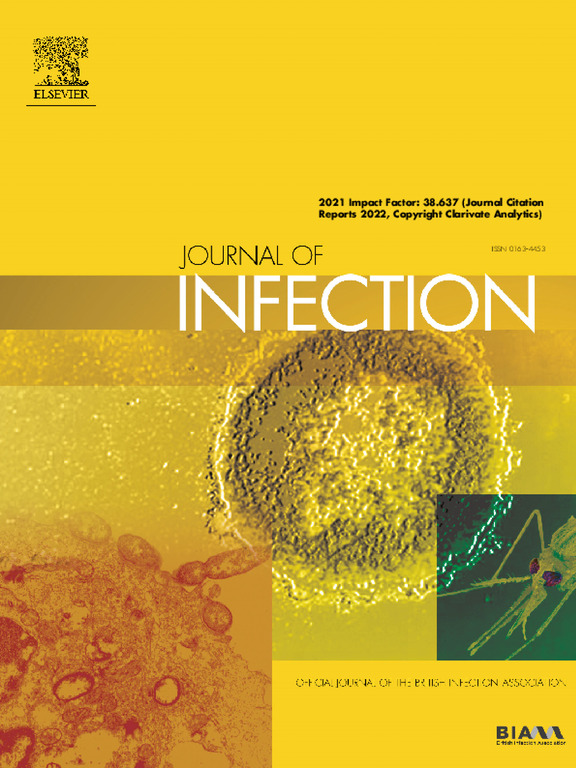中国流行性乙型脑炎的流行病学特征和传播动态:模型研究
IF 11.9
1区 医学
Q1 INFECTIOUS DISEASES
引用次数: 0
摘要
目的近几十年来,中国连续发生季节性日本脑炎(乙脑)流行,特别是乙脑病毒(JEV)在农村和郊区持续传播。方法收集2013 - 2019年全国乙脑病例9061例、89个监测点蚊虫密度和337个城市人口流动情况。对乙脑病例周时间序列拟合时间趋势和调和项,估计乙脑病例周周期的振幅和峰值时间。建立了城市间人口流动的元人口网络模型,结合迭代贝叶斯推理算法,模拟了乙脑病毒的流行动态,估计了时变传播参数。结果乙脑病毒年流行高峰时间随纬度变化(p值<; 0.05),主要表现为南方城市早于北方城市晚于南方城市;不同纬度地区乙脑疫情年振幅波动差异无统计学意义(p值>; 0.05)。有效繁殖数较高的地区主要集中在中部地区,包括四川、重庆和陕西等省,年活动高峰一般在8月左右。人口流动导致的感染主要发生在连通性较高的枢纽城市,并向周边城市辐射。结论全国范围内的研究结果有助于提高对乙脑传播的态势意识,并为制定适当的干预策略提供依据,以实现消除乙脑的目标。本文章由计算机程序翻译,如有差异,请以英文原文为准。
Epidemiological characteristics and transmission dynamics of epidemic Japanese encephalitis in China: A modeling study
Objectives
In recent decades, China has experienced successive epidemics of seasonal Japanese encephalitis (JE), with the Japanese encephalitis virus (JEV) particularly spreading continuously in rural and suburban areas.
Methods
Nationwide data on 9061 JE cases, mosquito abundance from 89 surveillance sites, and population movement between 337 cities during 2013–19 were obtained. Seasonal multivariate linear regression models including time trends and reconciliation terms representing annual and semiannual cycles were fitted to the weekly time series of JE cases, and the amplitude and peak time of the cycles were estimated. A metapopulation network model of inter-city population mobility coupled with an iterative Bayesian inference algorithm was established to simulate the epidemic dynamics of JEV and estimate the time-varying transmission parameters.
Results
The timing of the annual peak of JEV epidemics varied with latitude (p-value < 0.05), mainly characterized by earlier in southern cities and later in northern cities. There was no significant difference in the annual amplitude fluctuations of JEV epidemics in different latitudes (p-value > 0.05). Regions with higher values of effective reproduction number Reff were mainly concentrated in central China, including Sichuan, Chongqing and Shaanxi provinces, with the annual activity peak typically occurring around August. Infections caused by population mobility mainly occurred in hub cities with high connectivity and radiated to surrounding cities.
Conclusions
Findings from this nationwide study can help enhance situational awareness of the spread of JE and inform appropriate intervention strategies to advance the goal of JE elimination.
求助全文
通过发布文献求助,成功后即可免费获取论文全文。
去求助
来源期刊

Journal of Infection
医学-传染病学
CiteScore
45.90
自引率
3.20%
发文量
475
审稿时长
16 days
期刊介绍:
The Journal of Infection publishes original papers on all aspects of infection - clinical, microbiological and epidemiological. The Journal seeks to bring together knowledge from all specialties involved in infection research and clinical practice, and present the best work in the ever-changing field of infection.
Each issue brings you Editorials that describe current or controversial topics of interest, high quality Reviews to keep you in touch with the latest developments in specific fields of interest, an Epidemiology section reporting studies in the hospital and the general community, and a lively correspondence section.
 求助内容:
求助内容: 应助结果提醒方式:
应助结果提醒方式:


